The world’s remaining wetland ecosystems play a vital role in capturing and storing approximately 35% of global terrestrial carbon (Deng et al., 2022), while also providing critical habitats for endangered species and ensuring the availability of clean water and food for millions of people. In short, wetlands are invaluable. Yet, they are under increasing threat from climate change, urbanisation and land-use pressures, making their protection an urgent global priority.
Effective conservation, however, depends on knowing where wetlands are and how they are changing over time. This is precisely the critical insight that Global Wetland Watch will provide. Within a year, this initiative will begin delivering comprehensive wetland data to UN member countries, with the official global portal launch set for 2026. The platform will offer a repository of information, including wetland types, habitat conditions and surface water dynamics, empowering nations to make informed decisions to safeguard these essential ecosystems.
To reach these goals, GWW have partnered with selected pilot countries to ensure GWW outcomes are designed to serve national needs. South Africa is one of these pilot countries that has joined the discussion and co-development with the GWW team.
As part of this in-country engagement, the GWW team has just returned from a 10-day mission to South Africa to conduct workshops and field trips to understand national wetland challenges and come up with new solutions to manage and restore wetlands globally.
I was lucky enough to take part in this mission that included field trips and workshops. The aim of the field trips was to get a hands-on experience of the challenges that wetlands face and understand how we best develop the technical solutions for mapping wetlands using satellites. Similarly, the aim of the workshops was to understand the challenges that the management of wetlands require and what the data needs are to national wetland management systems.
Pretoria and Cape Town wetland workshops
We conducted two national workshops – one in Pretoria and one in Cape Town, attracting in total over 80 national stakeholders, including officials from environmental, agricultural and water ministries as well as wetland mangers and wetland field specialists. The workshops provided an opportunity for the South African wetland community to meet for the first time post-COVID.
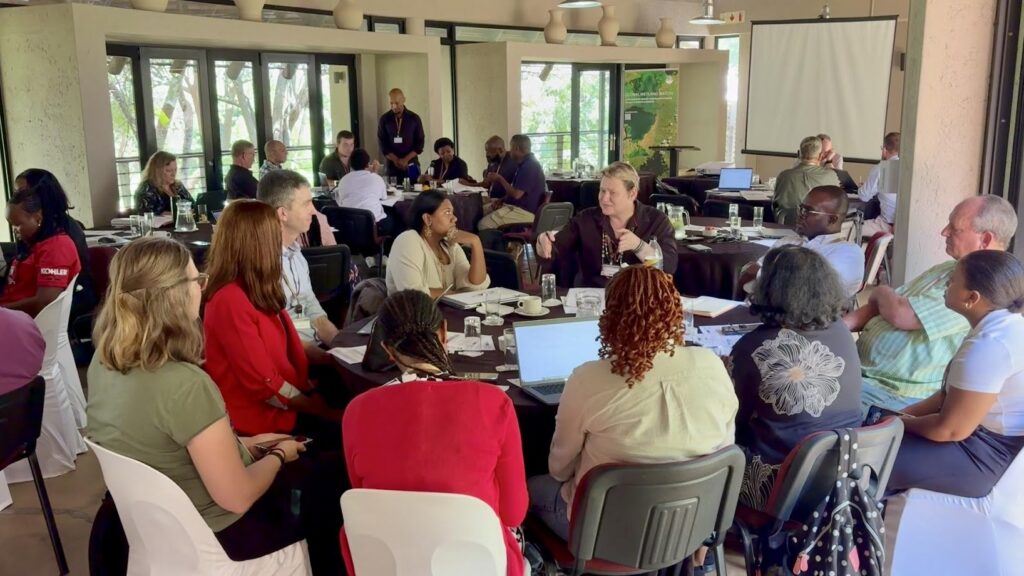
Both workshops included use case discussions on how to protect South African wetlands. Diverse wetland topics such as red list species protection, wetland restoration and land use issues were discussed. A national report will be written based on the discussions to help pinpoint national wetland priorities.
Both workshops contained detailed discussions on how to restore wetlands, how to avoid encroachment and land use issues, how to protect red list species and find ways to manage the peatlands. Furthermore, detailed discussions on data needs for management purposes took place for future collaborations and data sharing among partners.
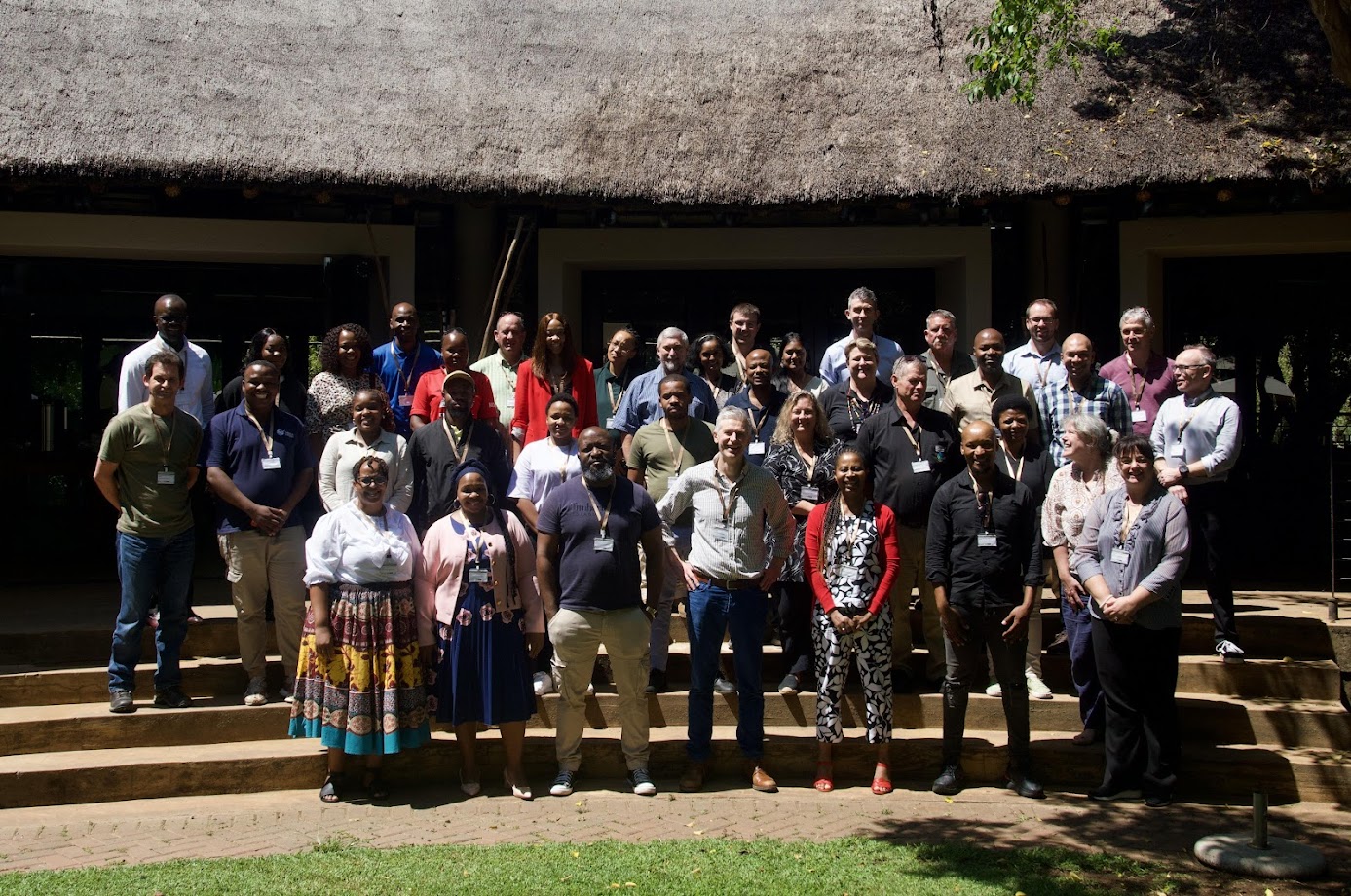 The Pretoria workshop was held in a beautiful setting in the Pretoria National Botanical Gardens.
The Pretoria workshop was held in a beautiful setting in the Pretoria National Botanical Gardens.Specific wetland use cases were discussed, centred around practical solutions for how to deal with several challenges from agricultural land use encroachment, invasive species and mining. The conclusions from the use cases and their description will be used to develop new ideas for national wetland priorities.
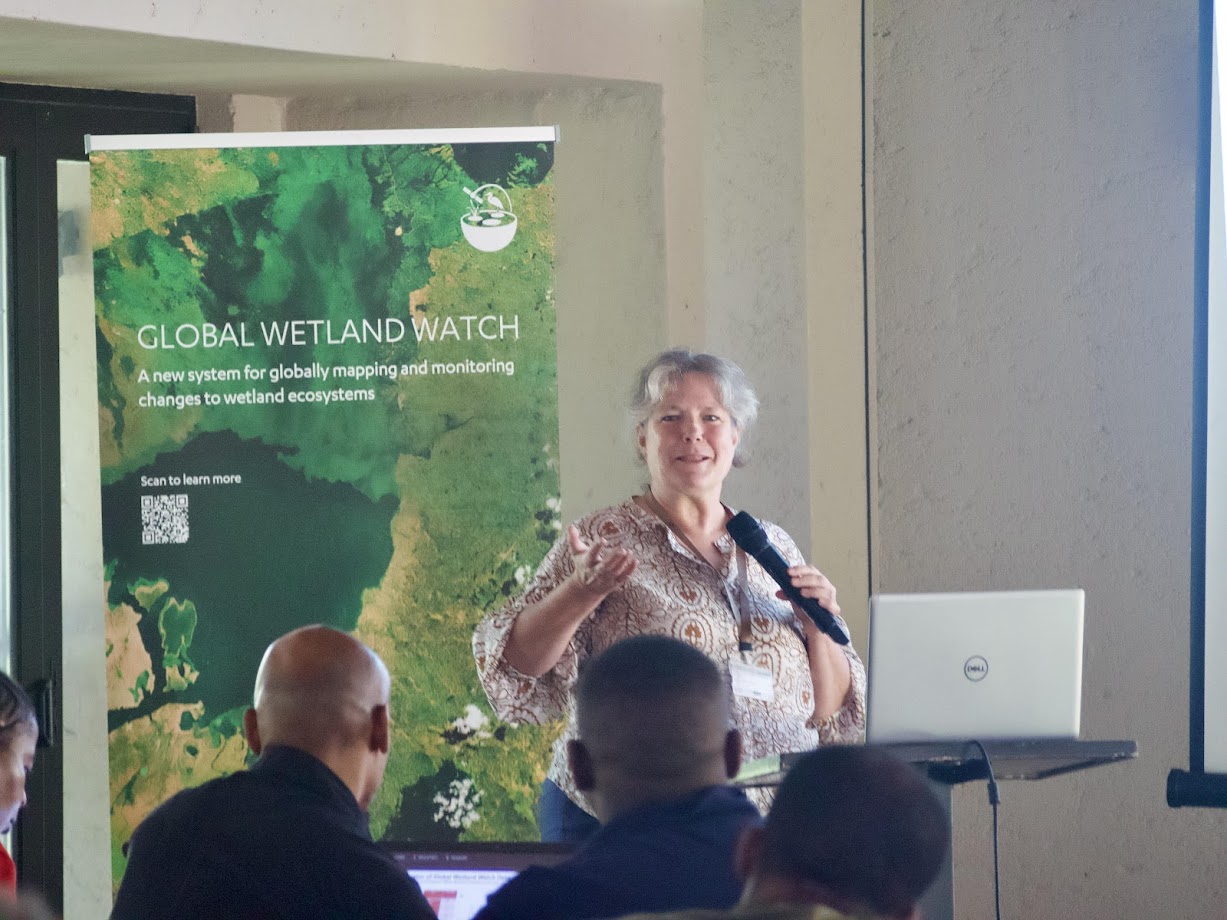
‘Wetland ecosystems in South Africa face significant threats, primarily from human activities and environmental changes. Habitat destruction due to urban expansion, agriculture, and industrial development leads to wetland loss and fragmentation. Pollution from agricultural runoff, industrial waste and sewage degrades water quality, while excessive water abstraction disrupts natural hydrology. Invasive alien species outcompete native flora and fauna, altering ecosystem functions. Climate change exacerbates droughts and flooding, further stressing wetlands. Additionally, overgrazing, unsustainable land management, illegal sand mining and poorly planned infrastructure contribute to wetland degradation. Addressing these threats requires effective policy enforcement, sustainable land and water management and active conservation efforts.’
Nancy Job, The South African National Biodiversity Institute (SANBI)

The Cape Town workshop was held in a beautiful setting in the Kirstenbosch National Botanical Garden, one of the most visited gardens of the world.
With regard to data needs for the South African government, the GWW team learned that:
-
- Rivers and streams, marshes and lakes have the highest national priority in terms of being poorly mapped
-
-
- 10m data annually delivered on wetland habitat and extent from GWW will be sufficent to meet many national needs but some interpretations between national wetland classifications and global wetland watch classifications will be needed.
-
- The additional products that GWW will release on top of national wetland maps that contain stream topography, surface water frequency and intertidal frequency will serve a number of national purposes and be vital for many management processes.
-
- Urbanisation and invasive species are key threats to national wetlands. The GWW team will investigate how to respond to these challenges.

Wetland intertidal frequency and wetland habitat mapping as provided by GWW in 10m resolution.
Over the coming months, we will process the findings of the workshops and work hand in hand with the South African government on providing better data for wetlands.
Wetland visits
The wetland visits included three educational field trips:
We first visited the Rietvlei Wetland near Pretoria. This wetland is located upstream of the Rietvlei Dam within a 4,000-hectare Nature Reserve and illustrates clearly how wetlands play a vital in safeguarding a city’s drinking water. For this wetland, the reservoir supplies around 41 million litres of water daily—3% of the metro’s needs and now also serves as a haven for wildlife, including buffalo, rhino, hippo and numerous wetland birds.
Rietvlei Wetland
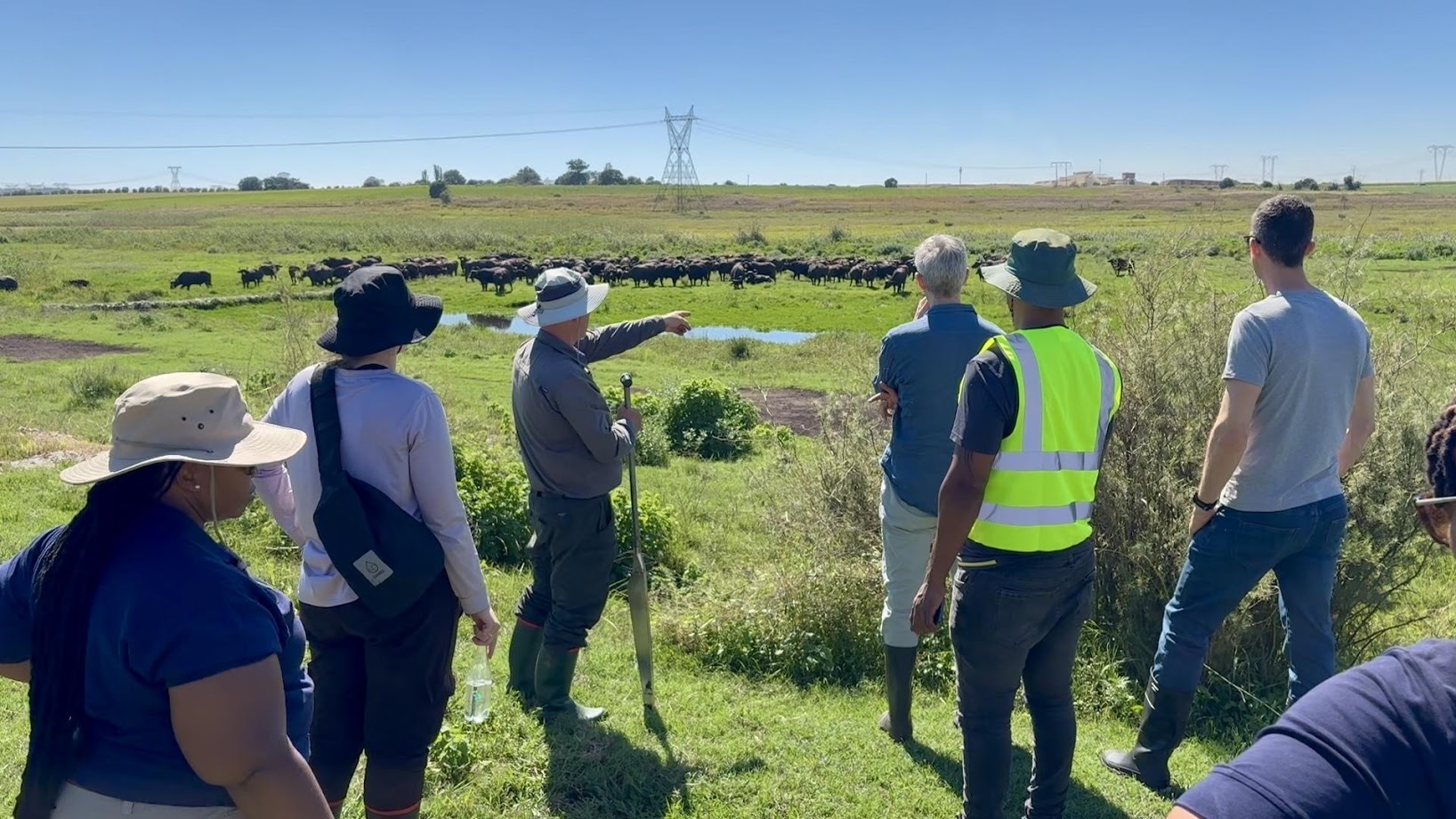 The Rietvlei wetlands are rich in peat but have over time been degraded by peat excavations and agriculture.New conservation work helps to restore the natural wetland functions.
The Rietvlei wetlands are rich in peat but have over time been degraded by peat excavations and agriculture.New conservation work helps to restore the natural wetland functions.However, the wetland has its issues: Pollution and excess nutrients from the dam’s urbanised catchment have led to frequent algae blooms and pollution of drinking water. However, by re-wetting the peat areas of the wetland and restoring natural water flows, the project is not only reviving the wetland’s water purification function but also preventing carbon emissions. When peatlands degrade, they release stored carbon, contributing to climate change. Restoring the peat in this area has effectively turned it back into a carbon sink, helping to reduce greenhouse gas emissions.
Walking through the wetland, we could also see evidence of its past degradation. Decades ago, much of the wetland dried out due to erosion channels, farming activities and human-made drainage ditches, which diverted water away from the main system. The natural water ways that are now being restored will truly benefit the water quality of the drinking water. Very nice to see this but also humbling knowing what it takes to manage such wetlands and knowing that similar damage is happening to wetlands across the world.
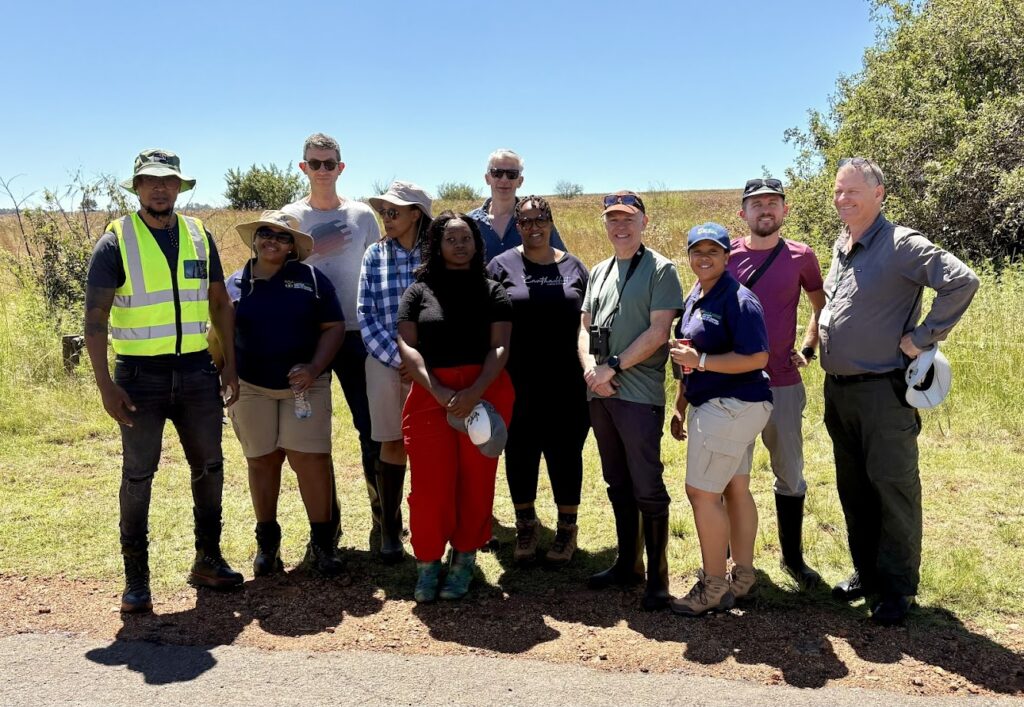
A wetland field trip with a group of South African government officials and wetland experts.
In terms of remote sensing, we will use this field visit to better understand similar degraded wetland systems close to reservoirs, dams and urban environments.
Kgaswane Nature Reserve
Our next field visit was to the beautiful Kgaswane Ramsar Site Mountain Reserve in the foothills of the Magaliesberg. As one of the oldest mountain ranges in the world, the Magaliesberg is not just a geological curiosity but also a critical catchment area for numerous streams. The hydrology of the reserve allows runoff from the upper slopes to run through cracks in the underlying rock, eventually coming out into the peat-rich, lower-lying wetlands and downstream valleys.
The diverse landscapes of the reserve also include grassland, shrubland, mixed woodland and a vast amount of biodiversity. All these elements, we can map with remote sensing and help manage.
Beyond its biodiversity, the site plays a crucial role in groundwater recharge, providing fresh water for both people and livestock in the lower valleys. Local communities also rely on the reserve for tourism, showcasing the delicate balance between conservation and human use.
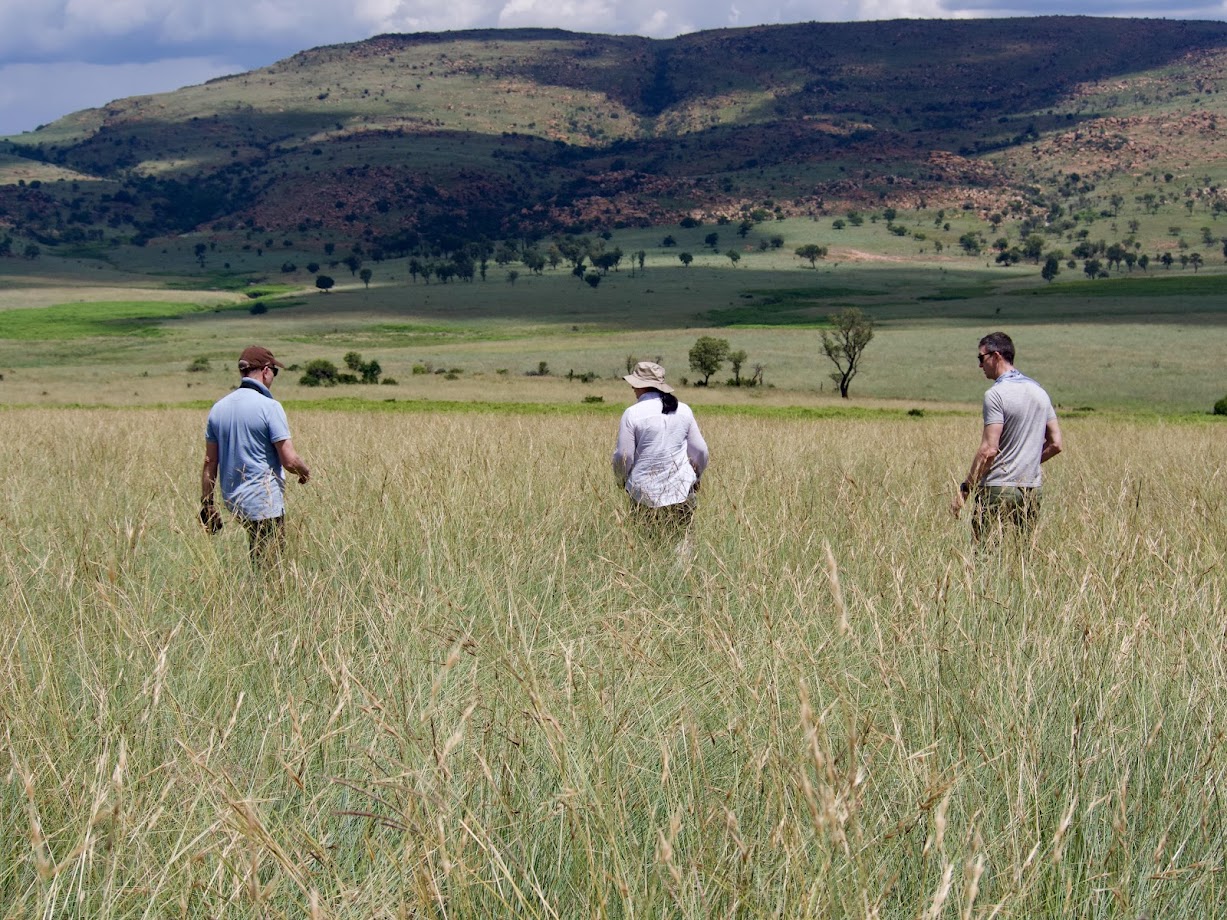 Walking towards the peat-rich wetlands. Pristine wetlands with very little human influence.
Walking towards the peat-rich wetlands. Pristine wetlands with very little human influence.Overlooking the reserve, we could see far into the flatter valley where mining companies and projects were visibly abundant. It was interesting, frightening and enlightening at the same time to learn that some mining companies take careful action in helping protect the reserve and their local environments but other mining companies leave the earth barren and polluted after having taken what profits the land can provide. Mining is a double-edged sword as we need the minerals and metals for green transition, but the local consequences of mining can be fatal.
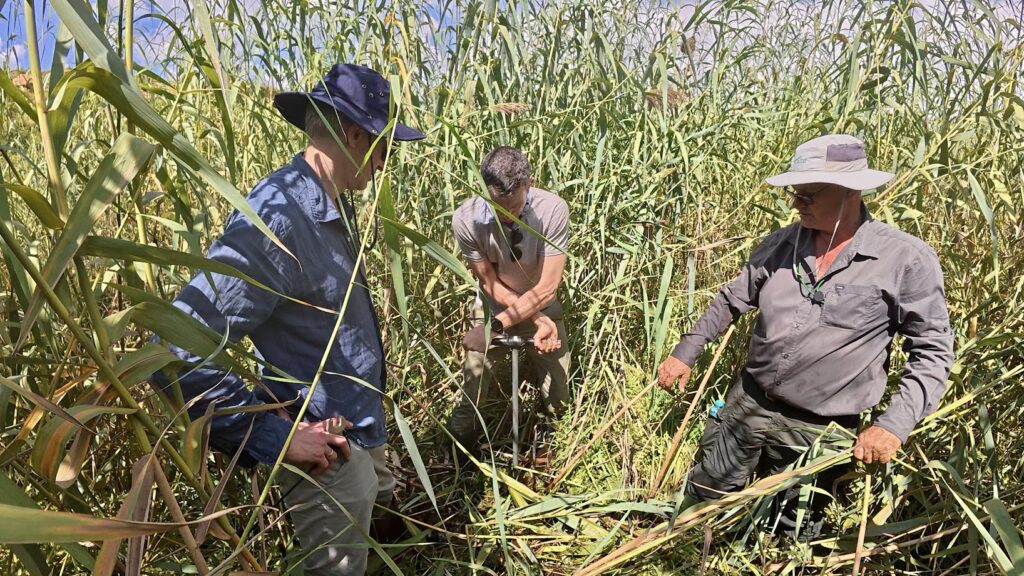
Peat core sampling. Seeing firsthand how peat is formed and understanding the value of rewetting was extremely rewarding.
It was a pleasure seeing a pristine wetland environment and exploring this extraordinary landscape firsthand.
Nuwejaars Wetlands
After a few days, the GWW team visited the Nuwejaars Wetlands Special Management Area (SMA), which showcases how conservation and sustainable farming can thrive together.
 Agriculture supported by wetlands. Close dialogues between wetland managers and farmers ensure the wetlands are not destroyed by the overuse of water or fertilisation.
Agriculture supported by wetlands. Close dialogues between wetland managers and farmers ensure the wetlands are not destroyed by the overuse of water or fertilisation.Spanning 460 km² of the Agulhas Plain in South Africa’s Overberg region, this initiative is a collaborative effort between 25 landowners and a local urban community to protect their landscape while securing their livelihoods.
Since 2002, the SMA has successfully balanced biodiversity conservation with agriculture focusing on connecting remaining wetland species and functions through establishing ecological corridors and removing invasive alien species to restore natural habitats.
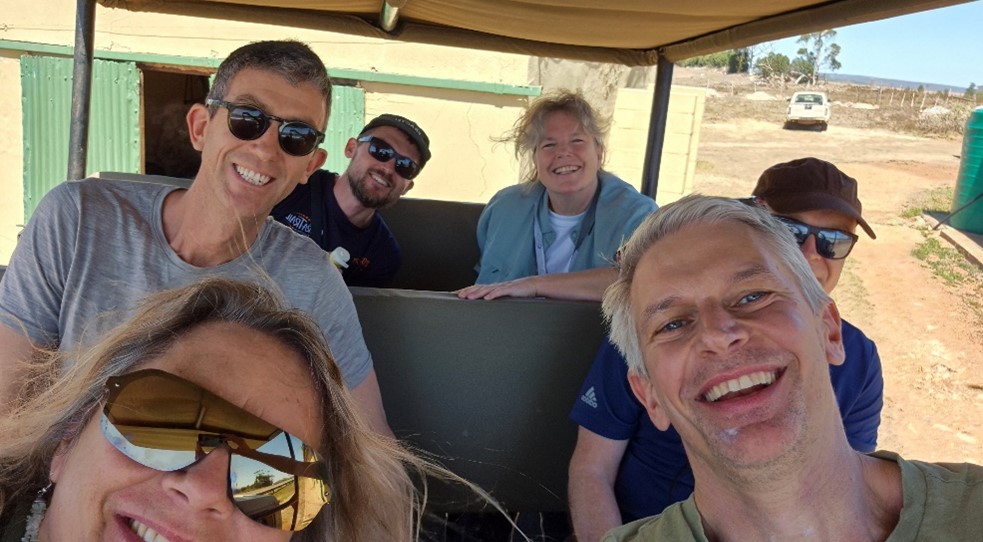
The GWW team ready to visit more wetlands. Nancy Job from SANBI The South African National Biodiversity Institute (SANBI) in the back right was our guide and help throughout our whole visit to South Africa.
A highlight of the visit was witnessing the reintroduction of wildlife that had been hunted to local extinction 150–200 years ago. Today, buffalo, hippo, bontebok, and eland roam the reserve, symbolising the success of conservation initiatives. The reserve is also a birdwatcher’s paradise, with over 230 recorded bird species adding to the rich biodiversity.
This visit reinforced the power of community-driven conservation, proving that sustainable land management can safeguard both nature and livelihoods. It also confirmed our knowledge that protecting wetlands is not just letting nature be alone but can in some cases require significant resources to avoid invasive species damaging the wetlands.
What is next
Seeing firsthand the delicate balance between human impact, ecological function and conservation efforts in South Africa, our team left with a deeper appreciation for the urgent need to protect and restore these invaluable ecosystems. GWW work is even more urgent for us now!
Over the coming months, we will process the findings of the workshops and field work and work hand in hand with the South African government towards providing better data for wetlands.
A big and sincere thanks to our Soth African partners for facilitating the workshops, hosting us and showing their country’s wetlands to us!
About Global Wetland Watch
The Global Wetland Watch founding partners are DHI A/S, UNEP-DHI Partnership – Centre on Water and Environment and UNEP.
DHI and the UNEP-DHI Partnership – Centre on Water and Environment form a centre of expertise dedicated to improving the management, development and use of freshwater resources. DHI provides comprehensive and proven hydrological mapping and modelling services. DHI leads the algorithm and system development and ongoing operational aspects of the system, including annual data updates and maintenance.
The United Nations Environment Programme (UNEP) is the leading global environmental authority that sets the global environmental agenda, promotes the coherent implementation of the environmental dimension of sustainable development within the United Nations system and serves as an authoritative advocate for the global environment. UNEP will provide strategic leadership, political and institutional engagement with countries and track activity progress and reporting.
Funding
The financial support for the development of the Global Wetland Watch comes from Google.org and their open call for projects using AI to accelerate progress toward the UN’s Sustainable Development Goals.
The crucial role of wetlands in South Africa
The Global Wetland Watch was recently in South Africa, advancing global initiatives for wetland management and restoration.
World Wetlands Day 2025 – Protecting wetlands for our common future
On World Wetlands Day, we reflect on the critical importance of wetlands and the urgent need to protect them.
Towards a global high-resolution inventory of wetland typologies
The Global Wetland Watch (GWW) is aiming to fill a critical global data gap by developing and providing a new global-level inventory of wetlands with unprecedented spatial and thematic details.